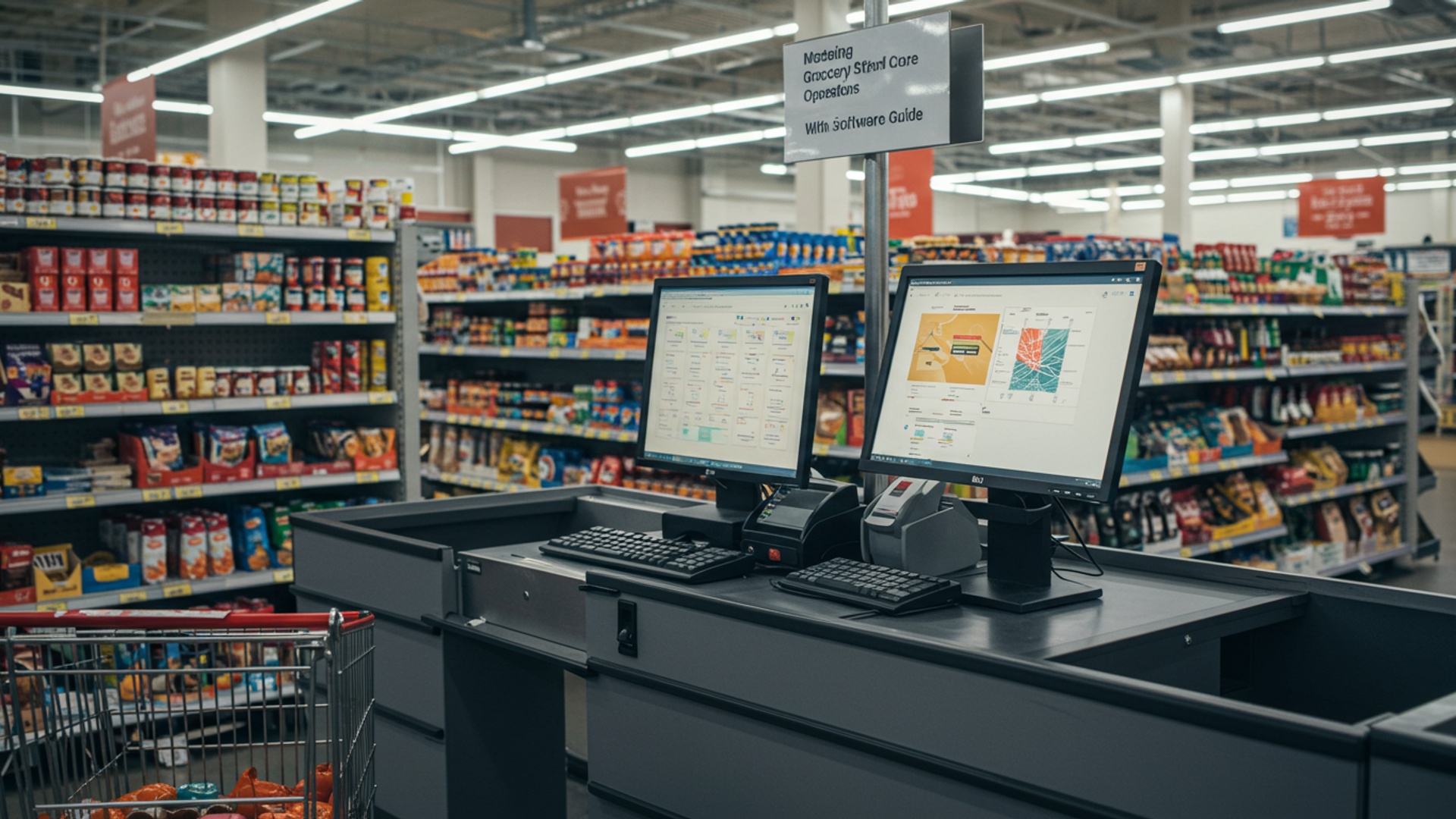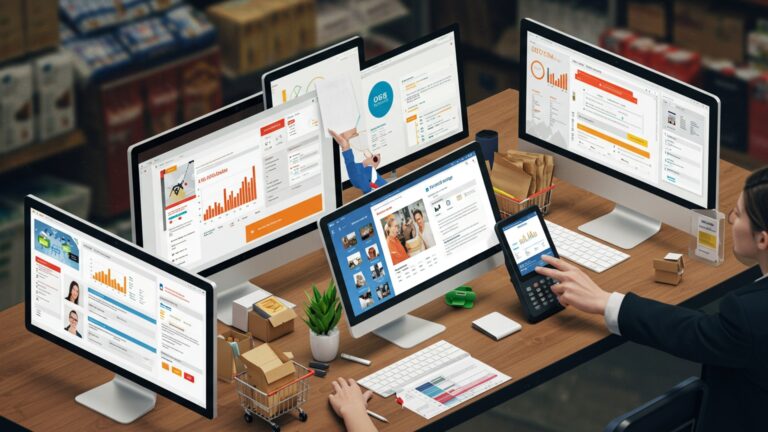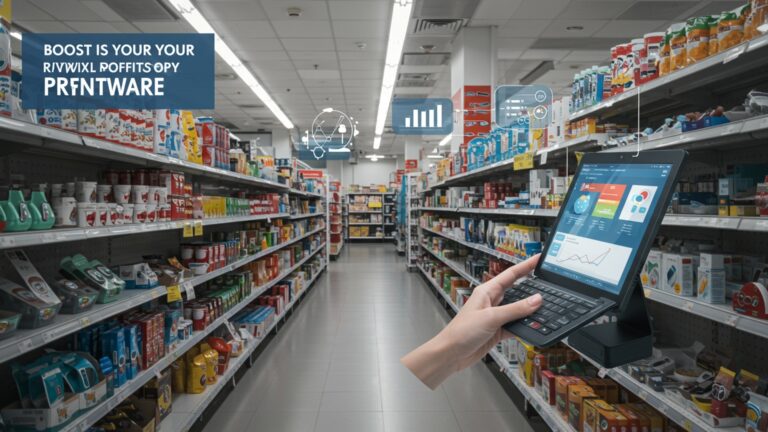Mastering Grocery Store Operations with the Right POS Software Guide
Modern grocery retail demands more than just efficient transactions; it requires a sophisticated operational backbone. Supermarkets face increasing pressure from supply chain volatility and evolving consumer expectations for speed and convenience, exemplified by the rapid adoption of scan-and-go options and personalized promotions. A robust POS software for grocery store transcends its traditional role as a simple cash register, becoming the central nervous system that orchestrates inventory management, employee scheduling. real-time sales analytics. Leveraging cloud-based systems, operators now gain critical insights into shrinkage, optimize stock levels for perishable goods. power integrated loyalty programs, transforming raw transactional data into actionable strategies for enhanced profitability and customer satisfaction in a competitive landscape.

Understanding the Unique Demands of Grocery Store Operations
Grocery stores are dynamic environments, characterized by high transaction volumes, diverse product ranges. the critical challenge of managing perishable goods. Unlike many retail sectors, grocery operations must meticulously track inventory by weight, unit. expiry date, all while ensuring rapid customer throughput at checkout. From managing fresh produce and frozen goods to household staples and specialty items, the operational complexities are immense. A single misstep in inventory can lead to significant waste, lost sales, or customer dissatisfaction. This intricate ecosystem demands a robust, specialized solution to streamline processes, enhance efficiency. ultimately, boost profitability. At the heart of this solution lies powerful pos software for grocery store operations.
What is POS Software for Grocery Stores?
POS, or Point of Sale, software is the central nervous system of any retail business, facilitating transactions and managing various operational aspects. For grocery stores, But, a standard retail POS simply doesn’t cut it. A specialized pos software for grocery store environments goes far beyond merely processing payments. It’s an integrated system designed to address the specific nuances of grocery retail, from weighing fresh produce at checkout to managing complex promotions and tracking customer loyalty. It acts as a comprehensive platform that ties together sales, inventory, customer data. employee management into a cohesive, actionable whole.
Essential Features of a Robust POS Software for Grocery Stores
Choosing the right pos software for grocery store operations hinges on its ability to provide a comprehensive suite of features tailored to the unique demands of the industry. Here are the critical components:
- Advanced Inventory Management
- Real-time Tracking
- Expiry Date Management
- Vendor Management
- Multiple Units of Measure
- Reorder Point Automation
- Streamlined Checkout & Payment Processing
- Fast Scanning & Integrated Scales
- Diverse Payment Options
- Self-Checkout Integration
- Coupon & Promotion Management
- Customer Relationship Management (CRM) & Loyalty Programs
- Purchase History Tracking
- Loyalty Programs
- Targeted Marketing
- Comprehensive Reporting & Analytics
- Sales Trends & Performance
- Waste Analysis
- Employee Performance
- Profitability Reports
- Employee Management
- Time Clock & Scheduling
- Role-Based Permissions
- Multi-Store Management (for chains)
- Centralized Control
- Inter-Store Transfers
- Integration Capabilities
- Accounting Software
- E-commerce Platforms
- Third-Party Delivery Services
Monitor stock levels across all departments instantly, preventing stockouts and overstocking.
Crucial for perishables, this feature helps identify items nearing their sell-by date for promotions or timely removal, significantly reducing waste.
Streamline ordering, track deliveries. manage vendor relationships efficiently.
Seamlessly handle products sold by weight (e. g. , produce), by count (e. g. , eggs), or by specific units (e. g. , a bottle of milk).
Automatically flag items that need reordering based on sales velocity and preset thresholds.
Rapid barcode scanning combined with integrated scales ensures quick and accurate pricing for weighed items.
Support for credit/debit cards, contactless payments (NFC), mobile wallets (Apple Pay, Google Pay), EBT. gift cards.
Allows customers to scan and pay for their own items, reducing queue times and labor costs.
Easily apply discounts, loyalty points. complex multi-buy promotions at the point of sale.
comprehend customer buying habits to offer personalized recommendations and promotions.
Implement points-based systems, tiered rewards. exclusive discounts to encourage repeat business.
Use customer data to send personalized offers via email or SMS, increasing engagement.
Identify peak sales hours, popular products. best-performing departments.
Track discarded items to identify areas for improved inventory management or purchasing.
Monitor sales per employee, transaction speed. other metrics to optimize staffing.
grasp margins on different product categories and make informed pricing decisions.
Track employee hours, manage shifts. simplify payroll processing.
Assign different access levels to staff, ensuring data security and control over sensitive functions.
Manage inventory, pricing, promotions. reporting across multiple store locations from a single dashboard.
Facilitate easy movement of stock between different branches.
Seamlessly integrate with platforms like QuickBooks or Xero to simplify bookkeeping.
Sync online and in-store inventory and sales for a unified retail experience.
Integrate with popular delivery apps to streamline order fulfillment.
The Transformative Impact: How the Right POS Elevates Your Grocery Business
Implementing a sophisticated pos software for grocery store operations isn’t just about upgrading technology; it’s about fundamentally transforming how your business runs. The benefits ripple through every aspect of the store:
- Enhanced Operational Efficiency
- Optimized Inventory Management & Reduced Waste
- Improved Customer Experience & Loyalty
- Data-Driven Decision Making
- Reduced Shrinkage and Loss
- Scalability for Growth
Faster checkout times mean shorter queues and happier customers. Automated inventory processes reduce manual labor, freeing up staff for more value-added tasks like merchandising or customer assistance. “FreshGrocer Market,” a mid-sized independent grocery store, reported a 25% increase in checkout speed after implementing a modern POS system with integrated scales and payment processing, directly translating to higher customer satisfaction scores.
This is perhaps the most critical impact for grocery stores. Real-time tracking, expiry date alerts. predictive analytics mean less spoilage and fewer stockouts. By identifying slow-moving items or those nearing expiry, managers can implement targeted promotions, significantly reducing shrink. A study by the Food Waste Reduction Alliance highlighted that improved inventory management systems are key to reducing food waste, a direct capability of advanced grocery POS systems.
Personalized offers based on purchase history, efficient loyalty programs. faster service create a more pleasant shopping experience. When customers feel valued and their time is respected, they are more likely to return. Actionable takeaway: Use your POS’s CRM features to segment customers and send targeted promotions for their favorite products, making them feel seen and appreciated.
The wealth of data generated by a modern POS system is invaluable. Sales reports can pinpoint peak hours, informing staffing decisions. Product performance reports highlight bestsellers and underperformers, guiding purchasing and merchandising strategies. This analytical power allows grocery store owners to make informed decisions that directly impact profitability and growth. For instance, analyzing sales data might reveal that organic produce sales spike on weekends, prompting a manager to increase stock levels and promotional efforts for those days.
Beyond waste, a good POS system helps mitigate theft and accounting errors. Detailed transaction logs, employee permissions. accurate inventory counts provide a clear audit trail, discouraging internal and external theft. Integrated security features can also flag suspicious transactions.
As your grocery store grows, whether by adding new departments or opening additional locations, the right POS software can scale with you. Multi-store management features become indispensable, allowing for centralized control and consistent operations across all branches.
Choosing the Best POS Software for Your Grocery Store: Key Considerations
Selecting the ideal pos software for grocery store operations requires careful evaluation. Here’s what to look for:
| Consideration | Description & Why It Matters |
|---|---|
| Scalability | Can the system grow with your business? Look for solutions that can handle increased transaction volumes, new product lines. additional store locations without a complete overhaul. |
| User-Friendliness | A complex system will lead to training headaches and errors. Opt for intuitive software with a clear interface that staff can quickly learn and operate efficiently, especially during busy periods. |
| Hardware Compatibility | Evaluate if the software integrates with your existing hardware (scanners, printers, scales) or if new hardware is required. Factor in these costs when budgeting. |
| Vendor Support & Training | Reliable 24/7 technical support is crucial for any business, particularly one with high transaction volumes like a grocery store. Look for vendors offering comprehensive training resources and regular software updates. |
| Total Cost of Ownership | Beyond the initial purchase or subscription fee, consider potential costs for hardware, installation, training, ongoing support. future upgrades. Transparency in pricing is key. |
| Security Features | Ensure the software is PCI compliant for payment processing and offers robust data encryption to protect customer and business data. Role-based access controls are also vital. |
| Customization & Flexibility | Can the software be adapted to your specific store’s needs, such as unique loyalty programs, specific reporting requirements, or integration with niche third-party services? |
Real-World Application: A Grocery Store Success Story
Consider “The Daily Harvest,” a medium-sized independent grocery store struggling with outdated cash registers and manual inventory tracking. Before implementing a modern pos software for grocery store operations, their challenges were significant:
- Long checkout lines
- High food waste
- Inaccurate stock levels
- Limited customer insights
Manual price look-ups and slow payment processing frustrated customers.
Inability to track expiry dates effectively led to significant spoilage of fresh produce and dairy.
Manual counts resulted in frequent stockouts of popular items and overstocking of slow movers.
No way to track customer preferences or run effective loyalty programs.
After researching and implementing a comprehensive pos software for grocery store environments, The Daily Harvest saw remarkable transformations:
- Enhanced Efficiency
- Reduced Waste & Optimized Inventory
- Boosted Customer Loyalty
- Data-Driven Growth
Integrated scales and rapid barcode scanning reduced average checkout time by 30%. Customer feedback on wait times immediately improved.
The new system’s expiry date management feature automatically alerted staff to items nearing their sell-by date, allowing for timely promotions. This led to a 20% reduction in perishable waste within the first six months. Automated reorder points ensured that popular items were always in stock, leading to a 10% increase in sales of previously frequently out-of-stock products.
A new loyalty program, seamlessly integrated with the POS, allowed customers to earn points on purchases and receive personalized discounts. The store reported a 15% increase in repeat customer visits and a 25% higher average basket size for loyalty members.
Detailed reports identified peak shopping hours, allowing management to optimize staffing. They also discovered that artisanal cheese sales soared on weekends, prompting them to expand their specialty cheese section, which quickly became a new revenue driver.
This real-world example demonstrates how the right POS software can be a catalyst for significant operational improvements and sustainable growth for grocery businesses.
Future Trends in Grocery POS Technology
The evolution of pos software for grocery store operations is continuous, with several exciting trends shaping the future:
- AI and Machine Learning for Predictive Analytics
- Enhanced Self-Checkout and Cashierless Stores
- Hyper-Personalization at Scale
- Integrated Supply Chain Management
- Mobile POS and Pop-Up Store Capabilities
Expect POS systems to leverage AI to predict sales trends with greater accuracy, optimize inventory levels even further. suggest personalized promotions based on individual customer behavior. This could lead to hyper-efficient stock management and reduced waste.
As technology advances, self-checkout options will become even more intuitive and widespread, potentially leading to fully cashierless store experiences where computer vision and sensor fusion handle all transactions seamlessly.
Future POS systems will integrate even more deeply with customer data to offer highly personalized promotions and recommendations in real-time, both in-store and through digital channels, creating a truly bespoke shopping experience.
Tighter integration between POS, inventory. supplier systems will create a more transparent and efficient supply chain, reducing delays and improving freshness. Blockchain technology could play a role in enhancing traceability for certain products.
The flexibility of mobile POS systems will enable grocery stores to extend their reach through pop-up shops, farmers’ markets, or curbside pickup services, expanding their market footprint.
Conclusion
Choosing the right POS software for your grocery store isn’t merely an upgrade; it’s a strategic pivot towards sustained growth. I’ve personally witnessed how a well-integrated system transforms daily operational chaos into seamless efficiency, from precisely managing fresh produce inventory to enabling lightning-fast self-checkout. Consider the current trend of AI-driven inventory forecasting, which can drastically reduce waste by predicting demand for items like seasonal fruits, a true game-changer for independent grocers. My personal tip: don’t just shop for features; look for a POS partner that genuinely understands the nuances of grocery retail, offering robust support and consistent updates for trends like omnichannel fulfillment. Take the actionable step today to evaluate your existing system, prioritizing solutions that provide real-time data analytics for smarter purchasing and personalized customer engagement, much like the successful loyalty programs we’re seeing across the industry. Embrace this innovation. you won’t just streamline operations; you’ll cultivate a thriving community hub where efficiency meets exceptional service, transforming your grocery store into a beacon of modern retail success.
More Articles
How to Select the Best POS Software in India A Comprehensive Guide
How to Choose and Implement Cloud Based POS Software for Your Business
A Practical Guide to Implementing Cloud Based POS Software Seamlessly
Learn How to Master POS Billing Software for Faster Sales and Efficiency
FAQs
Why bother with a new POS for my grocery store?
A good POS system helps streamline everything from checkout to inventory management, making your operations smoother, reducing errors. ultimately boosting your bottom line. It’s about working smarter, not just harder.
What makes a POS “right” for a grocery store specifically?
Grocery stores have unique needs like managing fresh produce by weight, handling diverse product ranges, quick checkout speeds. robust inventory tracking. A “right” POS offers features tailored to these challenges, unlike generic retail systems.
What essential features should I look for in grocery POS software?
Look for powerful inventory management (including perishable goods), fast and accurate scanning, integrated loyalty programs, detailed sales reporting, self-checkout options. robust payment processing. Scalability and ease of use are also super vital.
How does a modern POS system improve grocery inventory control?
It provides real-time tracking of stock levels, automates reordering based on sales data, helps identify slow-moving items. reduces waste by flagging expiring products. This means less guesswork and more accurate stock.
Can a POS really make my customers happier?
Absolutely! Faster checkout times, personalized loyalty programs, easy price lookups. the ability to handle various payment methods all contribute to a smoother and more positive shopping experience, encouraging repeat visits.
Is it complicated to switch to a new POS system for a grocery store?
While any new system requires some adjustment, the best POS solutions are designed with user-friendliness in mind. Many providers offer training and support to help your team get up to speed quickly, minimizing disruption.
Will investing in new POS software actually save my grocery store money?
Definitely. By reducing errors, optimizing inventory, improving staff efficiency. providing insights to make smarter purchasing decisions, a good POS system offers a significant return on investment over time. It’s about cutting costs and increasing sales.






